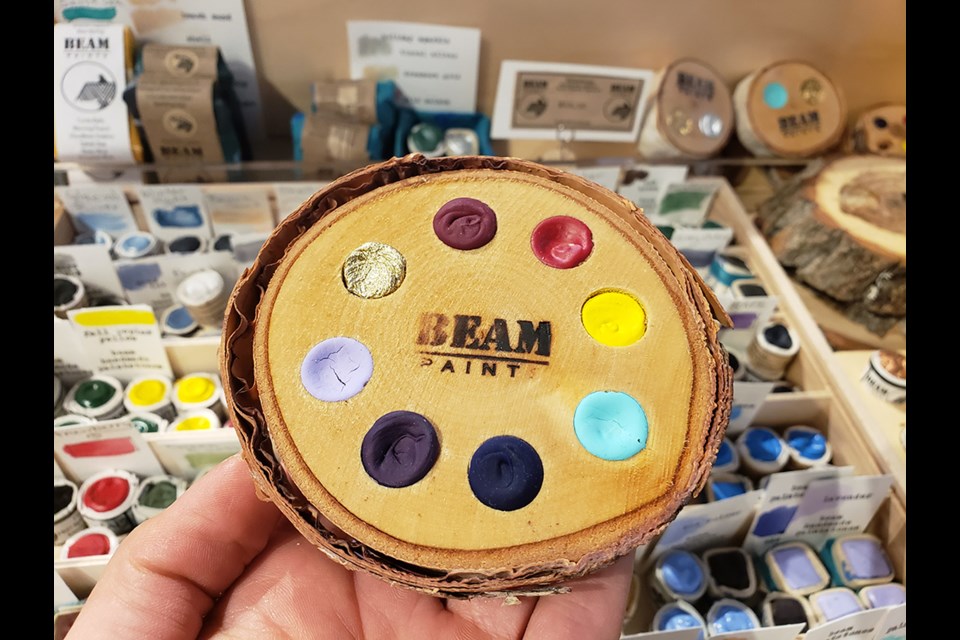Life is full of irony. Curio stores by the ocean that sell plastic seashells and pre-ripped jeans at high-end boutiques are among them.
It seems we can be sold almost anything when it’s well marketed. Today’s nameless, faceless world of consumerism invites cutting corners for higher profit margins and dumping the refuse of industry in a stranger’s backyard.
More and more of us, however, are becoming aware of this dark underbelly. Exposing it often begins with reading ingredient lists and turning over labels.
Artists have often been at the leading edge of culture. The dreamers and visionaries often see beyond the haze of humanity’s technologically-dependent and toxic ways of life.
Many choose to swim upstream and question the current norms, including what materials they create with. Where they see reliance on materials sourced from long distances and laden with plastic and harmful chemicals, they are thinking outside the box.
Not so long ago, we “shopped’” in the forest and ocean. What we had in excess, we traded for what others had handmade, foraged or hunted. There was an honesty to it all. No greenwashing was necessary and trading eye-to-eye with community members discouraged shady dealings.
These days we often outsource the gathering of materials and even innocent inspirations to create art can inadvertently bathe the planet in plastic and harsh chemicals. Some of us are returning to the land to respectfully harvest the materials we create with.
Upcycling is not a new concept. Repurposing and adding value to something that would otherwise be garbage just makes good sense.
Texturized paints containing recycled plastic and walnut husks are just a few examples of products hitting the shelves. Artist supply shops are popping up, hosting a myriad of industry castoffs for creative projects.
Plastic salvaged from ocean cleanups is making its way into giant educational sculptures. Entire lines of products are now sourcing the majority of their materials from the so-called waste stream.
Car belts are being upcycled into purses and airline seat leather into suitcases. The limit is our imagination.
Recycled materials are more mainstream as well, with household paints or artist gesso leftovers merged and reshelved for a second chance at life. Canvases are often reused and even sourced at thrift stores by the savvy painter.
Colour, so adored in art projects, can be sourced from natural dyes. Collectives are even growing dye gardens complete with flowers, vegetables and fungi well known for their strong pigments.
When using acrylic paints, being careful to avoid rinsing paint brushes down the drain, where they can release heavy metals into marine habitat, is a growing consideration. Some are soaking excess paints and rinse water into rags and sending them to landfill as a stop-gap solution until transitioning over to more earth-friendly options.
Many art supplies are laden in unnecessary plastic casings to increase their appeal, but to no added benefit artistically. Opting for minimally packaged, natural products supports a growing list of brands that aim to do exactly this.
Next time you are inspired by the wonderous world we inhabit to get creative, take a breath to ensure your creation honours creation.
Let’s Talk Trash is qathet Regional District’s waste reduction education program. For more information, email [email protected] or go to LetsTalkTrash.ca.



